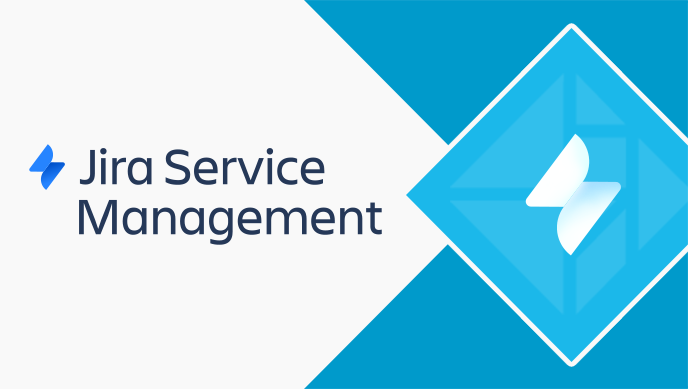You’ve all read the exciting, new Atlassian announcement. The next generation of the popular Atlassian Jira Service Desk has arrived: Jira Service Management. With Jira Service Management incorporates richer ITSM capabilities to enable development, IT operations, and business teams to collaborate at high velocity, respond to changes, and deliver great customer and employee service experiences. Jira Service Management unifies many exciting new Atlassian features to help teams provide amazing service, quickly resolve incidents, and respond to changes. This launch underlines Atlassian’s continued commitment to invest heavily in ITSM, a market where they continue to see tremendous momentum and growth.
This article will help you understand what will change and when, and why this is an opportunity for you to accelerate your organization’s ITSM transformation. If you would like more details, watch our webcast Reimagining ITSM for an Agile and DevOps world presented by Amita Abraham – Head of Product Marketing IT Teams at Atlassian. She provides a strategic overview of Jira Service Management and demonstrate how this tool can transform your ITSM.
1- Why the big change?
Let’s look at Atlassian’s motivation for making this major investment. According to Gartner, “through 2023, 80% of ITSM teams that have not adopted an agile approach will find their ITSM practices are ignored or bypassed as a result of more agile ways of working being adopted elsewhere in the organization.”
Atlassian wants to address the following ITSM needs:
- Increasing user expectations: customers and employees expect always-on, consumer-grade service experiences.
- Agile and DevOps gaining traction: IT departments are rethinking the way they work with development
- Rise of remote: working remotely is the new normal, demanding new ways of working together
- Cost sensitivity: the current environment is forcing companies to be more cost-sensitive as they shift to digital businesses
2- From IT to Service Management across the enterprise
Amid rapid transformations, IT is often constrained by old ways of working and legacy tools. Rigid processes, disconnected tools, and silos between development and operations prevent teams from enabling high-performing digital processes.
With Jira Service Management, you can empower teams to deliver end-to-end value at high velocity, with a Service Management platform that:
- Accelerates the flow of work between development and operations
- Empowers all teams to rapidly deliver value, from IT and DevOps to HR, facilities management, marketing, and more.
- Increases visibility with an open, collaborative platform

In addition to the rich request-management capabilities of Jira Service Desk that you already know and love, the initial release of Jira Service Management will include more in-depth change management as well as incident management capabilities (with the inclusion of Opsgenie) in all Cloud Editions. Future releases will include richer asset- and configuration-management capabilities from Mindville, and conversational ticketing capabilities from Halp.
3- Jira Service Management feature highlights
- Built for ITSM: With designated ticket categories for incident and change management, service requests, and problems, your team can triage, route, and manage everything that flows through IT.
- Modern incident management: Atlassian has taken the powerful incident swarming and on-call alerting capabilities from their popular Opsgenie product and built them right into Jira Service Management:
- The full power of alerting and on-call management
- Major incident collaboration and communication
- Post-mortem reports and export to Confluence
- Escalation from portal to major incidents, and more
- Change management, built for the DevOps era: Understand changes and innovate faster with integrations into modern software workflows.
- New change-request workflows
- Automatic change requests from continuous integration/continuous delivery (CI/CD) tools, such as Bitbucket Pipelines
- Deployment gating/control from change requests
- Risk assessment engine, and more
- (Coming soon) Fully-integrated asset and configuration management powered by the Mindville Insight product
- (Coming soon) Conversational ticketing functionality powered by Halp

4- When to expect these changes
November 2020:
- Jira Service Management will be available in Free, Standard, Premium, and Enterprise editions for Cloud.
- Opsgenie’s incident swarming and on-call alerting capabilities will be included in all Cloud editions of Jira Service Management.
- All deployment options of Jira Service Desk will be rebranded as Jira Service Management (packaging details vary across deployments).
Mid to late 2021:
- Mindville Insight’s asset and configuration management capabilities will be integrated into Jira Service Management.
- Opsgenie experience will be unified to Jira Service Management
- Halp free functionality will be added to Jira Service Management (Halp will continue to be offered as a standalone product)
5- The value of the Mindville acquisition for Jira Service Management
Atlassian recently acquired Mindville, and now, we can see clearly how it adds value to the Jira Service Management solution. Besides offering a robust CMDB engine integrated into the Atlassian solution, it’s important to remember that CMDB assets can be anything – not only IT-related items. Facilities, people, product catalogs, marketing collaterals, and contracts are also corporate assets that can be managed with Jira Service Management, enabling the vision of a business service hub that can help all teams respond to changes and incidents and ultimately deliver value fast.
6- What will happen with Jira Service Desk Server and Data Center?
For the Server and Data Center editions, Jira Service Management will be available in the 4.14 feature release targeted for the end of 2020. Please note that Opsgenie capabilities will be included only as part of Jira Service Management on Cloud, given that Opsgenie is a cloud-only service. It will be required as a separate purchase for the Server or Data Center versions. However, the exciting integration capabilities that Atlassian has added (e.g., easy escalation from tickets to a major incident) are available across all deployments. The new change-management capabilities (e.g., automatic change requests, deployment gating, etc.) will be available in Server or Data Center in a later release.
7- How can you get more information about it?
There you have it, a big announcement and a lot of information regarding Jira Service Management. As Atlassian experts, we are at the forefront of ITSM services and solutions and have experts ready to work with you and answer any questions you may have. If you would like more details, check out our webcast Reimagining ITSM for an Agile and DevOps world presented by Amita Abraham – Head of Product Marketing at Atlassian – as she details how the best ITSM and IT Operations teams are embracing principles of Agile and DevOps with Jira Service Management.



